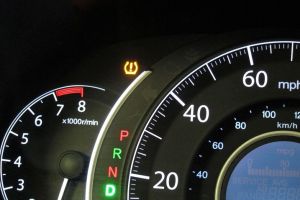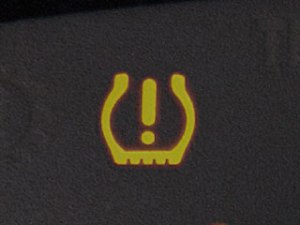 Welcome to Tech Tuesday from Buckeye Honda! We are talking tire pressure monitoring system or TPMS today!
Welcome to Tech Tuesday from Buckeye Honda! We are talking tire pressure monitoring system or TPMS today!
So Why Do We Have TPMS?
Due to the significant influence tire pressure has on vehicle safety and efficiency, TPMS was first adopted by the European market as an optional feature for luxury passenger vehicles in the 1980s. The first passenger vehicle to adopt tire-pressure monitoring (TPM) was the Porsche 959 in 1986, using a hollow spoke wheel system developed by PSK.
In the United States, the Firestone recall in the late 1990s (which was linked to more than 100 deaths from rollovers following tire tread-separation), pushed the Clinton administration to legislate the TREAD Act. The Act mandated the use of a suitable TPMS technology in all light motor vehicles (under 10,000 pounds), to help alert drivers of severe under-inflation events. This act affects all light motor vehicles sold after September 1, 2007. Phase-in started in October 2005 at 20%, and reached 100% for models produced after September 2007. In the United States, as of 2008 and the European Union, as of November 1, 2012, all new passenger car models (M1) released must be equipped with a TPMS. From November 1, 2014, all new passenger cars sold in the European Union must be equipped with TPMS. For N1 vehicles, TPMS are not mandatory, but if a TPMS is fitted, it must comply with the regulation.
The TPMS system uses a sensor that’s mounted in the wheel and measures air pressure in each tire. When air pressure drops 25% below the manufacturer’s recommended level, the sensor transmits that information to your car’s computer system and triggers your dashboard indicator light.
What does it mean if the TPMS warning lamp illuminates?
When the TPMS warning lamp on the instrument panel illuminates while driving, it means that the system has detected at least one tire with a pressure below the accepted minimum psi for the vehicle. The tires should be inspected and the tire pressure checked as soon as possible. The lamp will extinguish after the tires are properly inflated.
What does it mean if the warning lamp goes on and off?
On cold mornings, the warning lamp may illuminate for a short period of time and then extinguish. This type of warning lamp response is likely caused by marginally low tire pressure that dips below the warning threshold over night but rises to an acceptable level as the tires heat up through vehicle operation or an increase in ambient temperature. The tires should be inspected and the tire pressure should be checked. The lamp should not illuminate when the tires are properly inflated.
 The significant advantages of TPMS are summarized as follows:
The significant advantages of TPMS are summarized as follows:
Fuel savings: According to the GITI, for every 10% of under-inflation on each tire on a vehicle, a 1% reduction in fuel economy will occur. In the United States alone, the Department of Transportation estimates that under inflated tires waste 2 billion US gallons (7,600,000 m3) of fuel each year.
Extended tire life: Under inflated tires are the #1 cause of tire failure and contribute to tire disintegration, heat buildup, ply separation and sidewall/casing breakdowns. Further, a difference of 10 lbs. in pressure on a set of duals literally drags the lower pressured tire 13 feet per mile. Moreover, running a tire even briefly on inadequate pressure breaks down the casing and prevents the ability to retread. It is important to note that not all sudden tire failures are caused by under-inflation. Structural damages caused, for example, by hitting sharp curbs or potholes, can also lead to sudden tire failures, even a certain time after the damaging incident. These cannot be proactively detected by any TPMS.
Decreased downtime and maintenance: Under-inflated tires lead to costly hours of downtime and maintenance.
Improved safety: Under-inflated tires lead to tread separation and tire failure, resulting in 40,000 accidents, 33,000 injuries and over 650 deaths per year. Further, tires properly inflated add greater stability, handling and braking efficiencies and provide greater safety for the driver, the vehicle, the loads and others on the road.
Environmental efficiency: Under-inflated tires, as estimated by the Department of Transportation, release over 57.5 billion pounds of  unnecessary carbon-monoxide pollutants into the atmosphere each year in the United States alone.
unnecessary carbon-monoxide pollutants into the atmosphere each year in the United States alone.
At Buckeye Honda we will thoroughly inspect your tires for you each time you are in our shop for maintenance and that includes a low tire pressure light. If you have any questions regarding your TPMS system or your tires please contact our Tire and Service Center in Lancaster Ohio by phone at 1-866-822-7485! We can help answer your questions as well as give you a free visual inspection of your tire system. There is so much riding on your tires don’t trust them to just anyone, trust the experts at Buckeye Honda in Lancaster Ohio.


